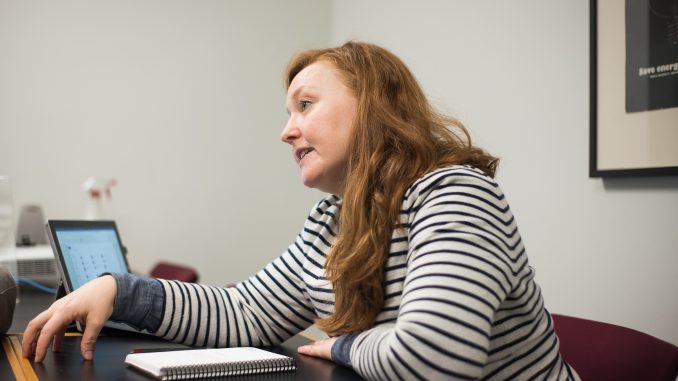
As Temple University continues to construct new buildings and add students, the university’s greenhouse gas emissions are increasing and the proportion of students, faculty and staff who use public transit is on the decline.
After declining from fiscal years 2006-12, emissions have steadily risen to nearly matching their 2006 level at approximately 212,600 metric tons of carbon dioxide equivalent, according to data from the Office of Sustainability.
Though carbon emissions per square foot have declined since fiscal year 2006, Temple’s total square footage has increased by approximately 32 percent since then, according to the data.
Starting with Temple’s Medical Education and Research Building, which was completed in 2013, every new building on Temple’s campus has been required to earn at least LEED Silver designation, said Rebecca Collins, director of the Office of Sustainability. LEED is a third-party sustainability certification program, according to the U.S. Green Building Council.
But, to decrease emissions, it is just as important to increase the use of renewable energy as it is to make buildings more energy efficient, Collins said.
“We have to start considering emission reductions from sourcing in order to meet our carbon emissions goals,” Collins said.
The university’s most recent Transportation Survey Audit Report shows that the percentage of students, faculty and staff using some form of public transportation while commuting each week decreased by approximately 9 percent from 2016-19.
Temple students, faculty and staff commuted an average of 21.9 miles by car to campus in 2019.
The university cannot necessarily control students commuting longer distances, Collins said.
“But I think what our role in the office is to talk about or provide resources for students that are promoting these lower-emissions types of transportation,” Collins said.
In April 2019, the university’s Climate Action Plan set a benchmark of reducing carbon emissions by 80 percent by 2050, The Temple News reported.
In order to achieve its goal, the university is seeking to partner with an outside renewable energy provider to power campus operations. Temple wants to glean up to 50 percent of its energy from renewable sources, Collins said.
The university is currently reviewing proposals from a range of providers, Collins said. Although no official timeline has been set yet, Temple could finish reviewing proposals in the next two months, after which it would determine which provider or combination of providers to select, Collins said.
Temple has begun to switch to more environmentally friendly lighting and replace old heating sources with programmable thermostats, Collins said. The university is currently testing the use of smart strips and plug load management systems in several buildings on campus to ease the energy load created by devices plugged into wall outlets, she added.
Briana Codio, a freshman nursing major, said that with all the technology the university uses to construct its new buildings, it is “obvious” that greenhouse gas emissions are increasing.
“So are they, like, reasonably building, or exceeding the amount,” Codio asked.



Be the first to comment